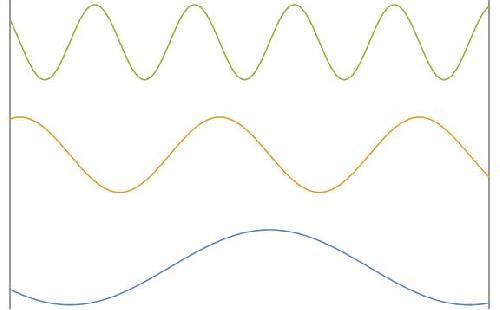While the Big Bang theory has been a very successful model of the birth of our universe, astrophysical observations found that it does require very special initial conditions. Determining the primordial universe scenario that preceded the Big Bang and gave rise to such initial conditions has been a topic of contention among scientists. The most popular theory of the primordial universe is cosmic inflation, during which the universe was expanding with an extremely fast exponential rate. On the other hand, there are also theories that contend that our primordial universe was fast contracting, slowly contracting, static or slowly expanding.
The persisting problem is that there has not been a clear way to distinguish those scenarios from observations. While we have learned much information about the spatial variation of the primordial universe from observations, without a chronological way to label the primordial stages of the universe, scientists could not know for sure whether the universe was expanding or contracting. Now, theorists are proposing a new method that can solve this puzzle at once.
Scientists from HKUST, Harvard-Smithsonian Center for Astrophysics and University of Texas at Dallas, Yi Wang (HKUST), Xingang Chen and Mohammad Hossein Namjoo (Harvard/UT Dallas), recently proposed a method to observationally distinguish those primordial universe scenarios. They note that some heavy particles in the primordial universe oscillate like clocks; and with clocks, one can label primordial stages of the universe with time and thus reconstruct the expansion or contraction history of the primordial universe. These heavy particles are called the "primordial standard clocks".
 It is well accepted that sinusoidal waves are produced in the primordial universe, through an event called "horizon crossing". At "horizon crossing", those waves got frozen and no longer propagating. In the figure, the horizon is represented by the gray vertical lines. Once the wavelength of the fluctuation become greater than the size of the horizon (the distance between the two vertical lines), the mode is frozen, which eventually become the seed of the large scale structure. Credit: Department of Physics, HKUST
It is well accepted that sinusoidal waves are produced in the primordial universe, through an event called "horizon crossing". At "horizon crossing", those waves got frozen and no longer propagating. In the figure, the horizon is represented by the gray vertical lines. Once the wavelength of the fluctuation become greater than the size of the horizon (the distance between the two vertical lines), the mode is frozen, which eventually become the seed of the large scale structure. Credit: Department of Physics, HKUST
"Imagine you took the frames of a movie and stacked them all randomly on top of each other. If those frames aren't labeled with a time, you can't put them in order. Did the primordial universe crunch or bang? If you don't know whether the movie is running forward or in reverse, you can't tell the difference," explains Chen. "The primordial standard clocks, however, put time stamps on the frames."
"From observing the oscillation of the massive fields, we are able to reconstruct when the spatial variations are created in the primordial universe," says HKUST Assistant Professor Yi Wang. "Soon, we may be able to verify the evolutionary history towards how our universe was created, which has remained a myth for so long."
The findings were detailed in a paper that has been accepted for publication by the Journal of Cosmology and Astroparticle Physics, and a preprint version is accessible at http://arxiv.org/abs/1509.03930.
source: Hong Kong University of Science and Technology